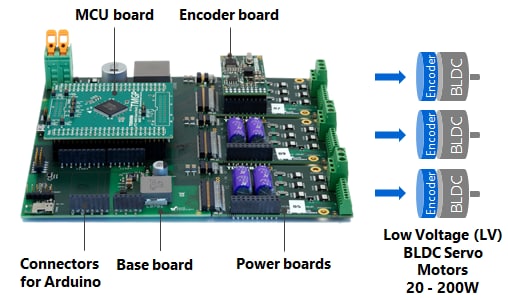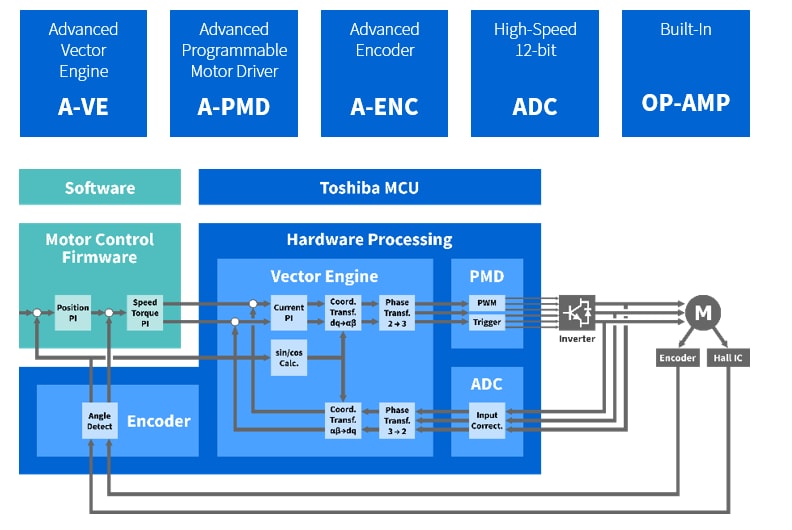- General Top
- SEMICONDUCTOR
- STORAGE
- COMPANY
-
My ToshibaSemicon
- Semiconductor Top
-
ApplicationsAutomotive
Body Electronics
xEV
In-Vehicle Infotainment
Advanced Driver-Assistance Systems (ADAS)
Chassis
IndustrialInfrastructure
BEMS/HEMS
Factory Automation
Commercial Equipment
Consumer/PersonalIoT Equipment
Healthcare
Wearable Device
Mobile
Computer Peripherals
-
ProductsAutomotive Devices
Discrete Semiconductor
Diodes
Transistors
Logic ICs
Analog Devices
Digital Devices
Wireless Devices
※
: Products list (parametric search)
Power SemiconductorsSiC Power Devices
※
: Products list (parametric search)
Isolators/Solid State RelaysPhotocouplers
Digital Isolators
Solid State Relays
Fiber Optic Transmitting Modules
※
: Products list (parametric search)
MOSFETsIGBTs/IEGTsBipolar Transistors※
: Products list (parametric search)
Diodes※
: Products list (parametric search)
MicrocontrollersMotor Driver ICsIntelligent Power ICs※
: Products list (parametric search)
Power Management ICsLinear ICs※
: Products list (parametric search)
General Purpose Logic ICsLinear Image SensorsOther Product ICsOther Product ICs
※
: Products list (parametric search)
-
Design & Development
Design & Development
Innovation Centre
At the Toshiba Innovation Centre we constantly strive to inspire you with our technologies and solutions. Discover how to place us at the heart of your innovations.
-
Knowledge
Knowledge
Highlighted Topics
Further Materials
Other
- Where To Buy
- Part Number & Keyword Search
- Cross Reference Search
- Parametric Search
- Stock Check & Purchase
This webpage doesn't work with Internet Explorer. Please use the latest version of Google Chrome, Microsoft Edge, Mozilla Firefox or Safari.
require 3 characters or more. Search for multiple part numbers fromhere.
The information presented in this cross reference is based on TOSHIBA's selection criteria and should be treated as a suggestion only. Please carefully review the latest versions of all relevant information on the TOSHIBA products, including without limitation data sheets and validate all operating parameters of the TOSHIBA products to ensure that the suggested TOSHIBA products are truly compatible with your design and application.Please note that this cross reference is based on TOSHIBA's estimate of compatibility with other manufacturers' products, based on other manufacturers' published data, at the time the data was collected.TOSHIBA is not responsible for any incorrect or incomplete information. Information is subject to change at any time without notice.
require 3 characters or more.
Servo Drive Reference Model For Multi-Channel Motor Control
The servo drive reference model combines Toshiba’s optimized motor control MCUs with Toshiba’s low RDS(ON) power MOSFETs to provide highly efficient control and drive solutions for brushless DC (BLDC) motors. The modular concept offers a high degree of flexibility for the field-oriented control (FOC) and closed loop positioning of up to three BLDC servo motors with a single MCU. The reference model helps to reduce system cost and gives a quick start to the implementation of advanced servo motor systems.
Applications
- BLDC Servo Motors
- Inverter / Drives
- Robot / Cobot / SCARA
- Automated Guided Vehicle (AGV)
- Lawn Mower
- 3D Printer

Demonstration
See how the fluid design of the reference model eases the the implementation of advanced servo motor systems: Within the model Toshiba`s motor control MCUs work effectively together with Toshiba’s low RDS(ON) power MOSFETs. Hence precise and accurate movement ot the robot arm is achieved.
Base Board & MCU Board
Vector control of up to 3 BLDC servo motors by a single MCU
Toshiba M4K MCU series is dedicated to the field-oriented motor control. The built-in Vector Engine (VE) takes care for the complex vector control calculations and feeds the Programmable Motor Drive (PMD) block to generate the PWM waveforms and perform other necessary functions such as dead-time control.
Motor Control Resources

Base Board & MCU Board Schematic
The base platform hosts the MCU board with the TMPM4KNFDFG Motor Control MCU (160MHz Arm® Cortex®-M4F core, 512kB Flash, 100-pin) and allows the connection of up to three Power Stages to drive the servo motors. The on-board USB and Bluetooth® communication options can be extended by shields for Arduino. The 24/48V power conversion with reserve polarity protection circuit completes the design.

Base & MCU board products
MCU, Arm® Cortex®-M4F, 160 MHz, 100-pin |
|
N-channel MOSFET, 100V/150A, DSOP adv. |
|
Bluetooth® 5 module with Toshiba TC35680 |
|
Level shifter |
|
Low Dropout Linear Voltage Regulator (LDO) |
|
High-speed Photocoupler / Photorelay |
|
Small signal MOSFET |
200W Power stage / 3-phase inverter
The 3-phase inverter design is based on the 100V / 150A TPW3R70APL low-voltage MOSFET from the latest U-MOS IX process technology which provides industry leading performance. With max. RDS(ON) of just 3.7mΩ, the drive, switching and output charge losses are reduced significantly enabling efficient driving of 48V BLDC motors up to 200W.

Power stage board products
Part number |
Description |
N-channel MOSFET, 100V/150A, DSOP adv. |
|
Comparator |
Encoder Sub Boards
To ensure a high flexibility for the position feedback signals, the encoder boards are exchangeable modules connected to the power stage. Currently supported interfaces are single-ended or differential hall and incremental encoder, and resolver absolute encoder.
Resolver Encoder Board

Differential Encoder Board

Servo Drive Reference Model Whitepaper

To offload the pressures placed on engineering teams and give them the head start they need in developing motor systems for their robot/AGV projects, Toshiba offers a highly flexible and simple to utilise solution. Its game-changing Servo Drive Reference Model encompasses all the essential elements of robotics-oriented motor control - the controller, the power delivery, the feedback loop, etc. The microcontroller at the heart of this reference model features an Arm® Cortex® processing core capable of running at 160MHz.
Toshiba has put together a whitepaper on robotic servo drives, which includes details of its reference model. Download it from here
* Arm and Cortex are registered trademarks of Arm Limited (or its subsidiaries) in the US and/or elsewhere.
* Bluetooth® is registered trademarks of Bluetooth SIG, Inc.
* All other company names, product names, and service names mentioned herein may be trademarks of their respective companies.

